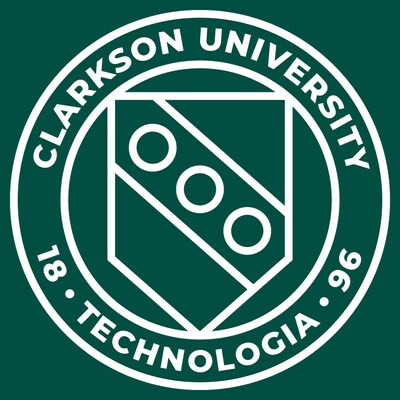Clarkson University Professor Awarded National Science Foundation Grant for Pioneering Research in Developing Deep Tissue Imaging

POTSDAM, N.Y., June 11, 2024 /PRNewswire/ — Clarkson University Assistant Professor of Chemistry and Biomolecular Science Xiaocun Lu was recently awarded an Engineering Research Initiation (ERI) grant from the National Science Foundation (NSF), which will support his pioneering research aimed at developing advanced biophotonic technology for deep tissue imaging.
Lu’s research investigates technology that could overcome the limitations of traditional imaging methods such as MRI, CT, and ultrasound imaging, and can significantly enhance the precision of medical diagnostics and treatments. The new imaging capabilities could also prove to be more accessible when it comes to infrastructural capabilities and from a cost perspective.
Current medical imaging techniques like MRI, CT, and ultrasound can probe deep into the body, up to tens of centimeters, or several inches. But, Lu explained, they generally show details only as small as about the width of a strand of hair. This means that smaller structures, such as cells and their internal components like organelles and biomolecules, remain difficult to see clearly.
“Conversely, fluorescence imaging can capture incredibly fine details, but only near the surface of the body,” Lu said. “Our research aims to bridge this gap by combining ultrasound’s deep-reaching capability with a chemical sensor that transforms ultrasound signals into fluorescent light. This innovative approach allows us to reveal cellular details without invasive procedures like biopsies, which carry significant risks and complications. Ultimately, our technology provides a clearer and more detailed view of deep tissues, enabling real-time, precise observation and diagnosis of conditions like tumors or other tissue diseases.”
As far as accessibility, Lu said the technology he is working on will build on currently available methods, without requiring expensive or advanced new features. Ultrasound imaging is widely recognized as affordable, portable, and simple to use, making it one of the most accessible imaging technologies available. It doesn’t require large and specialized facilities required by MRI or CT scans, which also pose potential safety risks from excessive and repeated usage.
“Our development builds on existing ultrasound systems, significantly enhancing their capability to visualize high-resolution details in deep tissues,” Lu said. “This innovation maintains the ease of use and safety features of traditional ultrasound imaging but extends its functionality beyond current limitations. Our approach not only makes advanced imaging more accessible in areas with limited medical infrastructure but also keeps costs down, making this technology a practical option for widespread use.”
Lu’s research focuses on biophotonic technology, which essentially uses light to explore and influence biological processes.
“Specifically, my approach involves developing a chemical sensor that converts ultrasound waves into fluorescence light,” he explained. “This technique transforms traditional ultrasound into fluorescence imaging, allowing us to see detailed information of deep tissue. For simplicity, you could call this “LumoUltrasound” (Luminescence + Ultrasound)”
For more information about the project, visit https://www.nsf.gov/awardsearch/showAward?AWD_ID=2347621
![]() View original content to download multimedia:https://www.prnewswire.com/news-releases/clarkson-university-professor-awarded-national-science-foundation-grant-for-pioneering-research-in-developing-deep-tissue-imaging-302169904.html
View original content to download multimedia:https://www.prnewswire.com/news-releases/clarkson-university-professor-awarded-national-science-foundation-grant-for-pioneering-research-in-developing-deep-tissue-imaging-302169904.html
SOURCE Clarkson University


